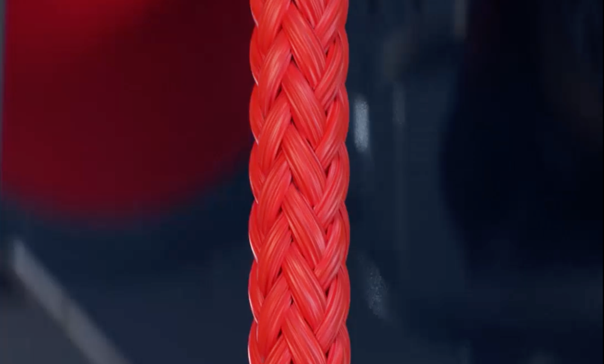Article
The secrets of the Konecranes S-series synthetic rope
Did you know that the heart of the game-changing Konecranes S-series crane is our revolutionary synthetic rope? It’s strong, safe and easy to maintain, remains free from barbs, and requires no lubrication.
The Konecranes S-series crane set a new industry benchmark with a never-before-seen synthetic rope as well as Smart Features that improve safety and productivity, provide high usability and low maintenance. Whatever industry or application, the Konecranes S-series crane is designed to keep production lines up and running and give production a boost.
Revolutionary synthetic rope
 Synthetic rope reduces wear on the drum and reeving components due to less surface pressure and friction. It is more durable than steel wire and does not require lubrication, reducing maintenance costs. It is also easier and safer to handle due to its lighter weight, and it does not fray or produce the sharp barbs common on steel wire rope, reducing the chance of hand injuries. Synthetic rope is also less vulnerable for traditional rope defects such as bird-caging or kinks, reducing replacement costs and maximizing productivity.
Synthetic rope reduces wear on the drum and reeving components due to less surface pressure and friction. It is more durable than steel wire and does not require lubrication, reducing maintenance costs. It is also easier and safer to handle due to its lighter weight, and it does not fray or produce the sharp barbs common on steel wire rope, reducing the chance of hand injuries. Synthetic rope is also less vulnerable for traditional rope defects such as bird-caging or kinks, reducing replacement costs and maximizing productivity.
Konecranes is the first industrial overhead cranes company to use the Dyneema fiber as standard for hoisting. Dyneema® is one of the world’s strongest fibers that has been used for more than 30 years in demanding rigging applications such as lifting slings, mooring, and towing large sea vessels. Lives depend on it during search and rescue operations and mountain climbing.
Learn more about the Konecranes S-series crane
Learn more
Secrets revealed
How good is our revolutionary synthetic rope? Check out these videos to see what happens as we put it to the test.*
Synthetic vs. wire rope
Synthetic rope stands up to hard use. We put it head-to-head in a test with regular steel rope to show what a difference the synthetic rope makes.
Splicing
Rope splicing is the first and the most important phase of roping. We did a rope splicing test to see how our innovative synthetic rope performs.
Chemical test
Literally the acid test - How will our synthetic rope react to hydrochloric acid?
Grinding test
How does our synthetic rope stand up to grinding and sparks. How will the sparks affect the rope’s performance?
Sharp edge test
Cutting-edge rope technology meets a real cutting edge - What will happen when our synthetic rope comes into contact with a sharp edge while lifting a load? Watch the video to find out.
Bonus test
Our synthetic rope passed the lab tests. Let’s see how a regular synthetic rope from a hardware store copes with the test. This load test will show!
*These tests have been done under controlled and safe laboratory conditions. The purpose of the tests is to damage the rope, for the purpose of illustrating its ultimate strength. The tests do not correspond to the actual use or the operating environment.
UNDER NO CIRCUMSTANCES SHOULD A DAMAGED ROPE OR A ROPE THAT CAN BE EXPECTED TO BE DAMAGED BE USED. A DAMAGED ROPE MUST ALWAYS BE CHANGED TO A NEW ROPE.
Proper operation, maintenance and regular inspection of the crane and rope are mandatory and are described in the crane manual. If you have any questions, please contact your Konecranes salesperson.

 Synthetic rope reduces wear on the drum and reeving components due to less surface pressure and friction. It is more durable than steel wire and does not require lubrication, reducing maintenance costs. It is also easier and safer to handle due to its lighter weight, and it does not fray or produce the sharp barbs common on steel wire rope, reducing the chance of hand injuries. Synthetic rope is also less vulnerable for traditional rope defects such as bird-caging or kinks, reducing replacement costs and maximizing productivity.
Synthetic rope reduces wear on the drum and reeving components due to less surface pressure and friction. It is more durable than steel wire and does not require lubrication, reducing maintenance costs. It is also easier and safer to handle due to its lighter weight, and it does not fray or produce the sharp barbs common on steel wire rope, reducing the chance of hand injuries. Synthetic rope is also less vulnerable for traditional rope defects such as bird-caging or kinks, reducing replacement costs and maximizing productivity.